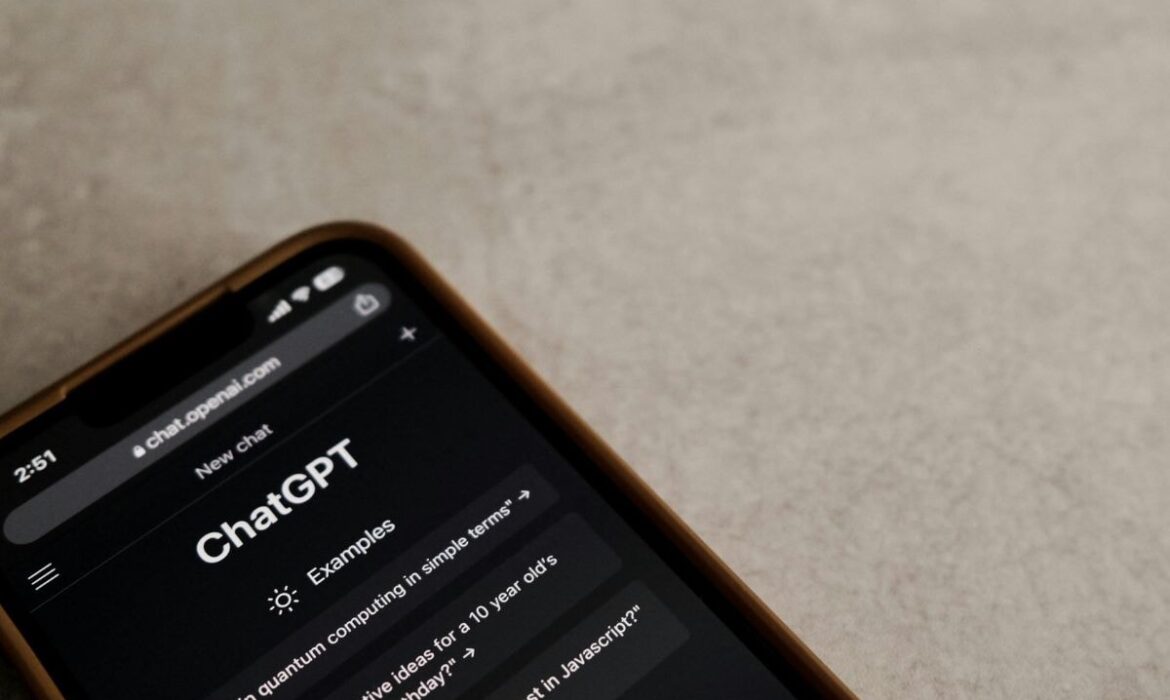The internet is changing, and so is the way people search. With AI platforms like ChatGPT on the rise, traditional search engines just aren’t cutting it anymore. But don’t stress, we’ve got your back. This guide will show you exactly how to rank in ChatGPT and stay ahead of the competition by using our digital marketing services.
ChatGPT answers questions directly, not with a list of links. However, links to brands are given, which is why today branded search is such a huge ranking factor compared to years ago.
Ranking depends on content relevance, quality, and clarity. Same as with humans.
Writing in natural language helps improve visibility in AI search results. You can see what Google thinks your page is about on its Natural Language API demo.
You need different SEO strategies for AI search engines. Its being called Ask Engine Optimization.
Key Takeaways:
- Understand How ChatGPT Ranks Content
Focus on user intent and write natural, relevant content that directly answers real questions. - Optimize Content with Structured Data
Use schema markup and maintain fast, mobile-friendly pages to help AI understand and surface your content. - Focus on Content Quality and User Needs
Create useful, scannable content with real value that solves problems and keeps users engaged. - Answer Questions the Way ChatGPT Does
Write in a conversational tone with clear formatting and actionable answers, like ChatGPT’s response style. - Use Smart Link Building (Without Spamming)
Earn trust by building branded and topical backlinks through high-quality guest posts and media mentions. - Build Engagement with User-Generated and Interactive Content
Boost dwell time and trust by encouraging user interaction through polls, comments, and community-driven content. - Promote Your Content with SEO and Content Marketing
Blend traditional SEO with AI-specific optimization to stay relevant in both search engines and generative platforms.
What Makes ChatGPT Different from Traditional Search Engines?

ChatGPT is an AI platform that gives direct answers to user queries, no link lists or endless scrolling required. It’s being referred to as a “generative engine” because it generates a response and not a list.
Unlike traditional search engines that throw a bunch of links your way, ChatGPT gets straight to the point. It pulls content from high-quality, relevant sources that AI systems or APIs from other search engines have indexed. [source]
This means ranking on ChatGPT isn’t your typical SEO game, it’s a whole new ballpark.
To rank here, forget about keyword stuffing and focus on creating content that genuinely matches user intent.
You need to be able to craft content that speaks naturally, answers questions directly, and give real value.
Let’s take a look at how you can do this.
1. Understand How ChatGPT Ranks Content
It’s All About User Intent and Relevance
To rank on ChatGPT, you need to think like the AI itself. (Welcome to 2025, where we are trying to think like the machine that’s trying to think like us).
ChatGPT’s mission? Reverse engineer user intent and deliver the most relevant content. Here’s what that means for you:
- Write content using natural language (keep it real).
- Focus on answering the user’s question clearly (no fluff).
- Use structured writing that flows like a conversation (make it easy to follow).
Forget the usual SEO rules. While traditional search engines like Google care about backlinks and page speed, ChatGPT’s all about content quality, relevance, and how well it nails user intent. [source]
So, make sure your content is not just good, but exactly what the user needs.
AI-Driven Answers Are Based on Content, Not Just Links
Unlike traditional search engines, ChatGPT isn’t all about backlinks or domain authority. Nope, it’s got a different set of priorities. Instead, it focuses on:
✅ Relevant material (keep it meaningful)
✅ Up-to-date content (nobody likes outdated info)
✅ Natural language processing signals (speak the language of the AI)
If your content is top-notch and genuinely solves user problems, you’re more likely to see it pop up in those shiny AI-generated responses. So, keep it fresh, keep it relevant, and keep it real.
2. Optimize Content with Structured Data
Add Structured Data and Schema Markup
Even though ChatGPT doesn’t crawl websites like Google does, structured data is still vital when AI platforms pull data from search engine results.
It’s like giving your content a roadmap to help AI systems find and understand it faster.
This is where schema markup comes in. Think of this as a backstage pass for your content. [source]
Schema helps your content get indexed by AI tools, making it easier for them to figure out what your page is all about.
The result? Your content gets seen and understood, making it more likely to show up in those AI-generated answers.
So, don’t skip this step, it’s the secret ingredient for better AI visibility.
Top Tip:
Add schema markup to blog posts, service reviews, and product pages to help AI-driven searches understand the context of your content.
Make Your Site Responsive and Fast
A responsive site with lightning-fast page speed doesn’t just make your users happy, it also gives you a big ol’ thumbs-up from both traditional search engines and AI platforms.
It’s like rolling out the red carpet for both your audience and the algorithms.
The faster and smoother your site runs, the better the chances of ranking higher, whether it’s Google or ChatGPT checking you out.
Speed matters so don’t let your site get stuck in traffic!
3. Focus on Content Quality and User Needs

Create Content That Delivers Real Value
The best way to rank on ChatGPT? Simple, create content that actually helps people.
Whether you’re answering a burning question or offering a solid solution, your content should always be focused on what the user really needs.
Here’s how to make it happen:
✅ Use clear headings and bullet points (nobody has time to read a wall of text).
✅ Write in natural language (keep it real, keep it friendly).
✅ Include multimedia content (images, videos, infographics) to keep things engaging.
If you nail these, you’ll be serving up content that’s not only helpful but totally irresistible to AI and your readers!
Structure for Easy Scanning
Want to take your content to the next level? Add some interactive components like dropdowns or tabs.
Not only will they boost engagement and keep users hooked, but they also make your content a breeze for AI tools to reference in those instant responses.
AI loves content that’s clear and structured, so when your content is organized with interactive features, you’re giving the AI exactly what it needs to pull your info quickly and effectively.
It’s like setting up a VIP lane for your content in the AI world!
4. Answer Questions the Way ChatGPT Does
Mimic the Conversational AI Format
Since ChatGPT loves to deliver answers in a friendly, conversational tone, you should be doing the same.
ChatGPT isn’t here for stiff, formal language, it wants the vibe to be casual and approachable, so your content is more likely to be included in AI-generated answers.
✅ Write clearly and conversationally (no keyword stuffing)
✅ Use concise intros, bullet points, and structured data
✅ Include original data, stats, and case studies
✅ Back everything with strong formatting and schema
Example:
Instead of saying:
“Social media marketing is a digital strategy used by businesses.”
Try:
“Wondering how social media can boost your business? It’s a simple yet powerful strategy used by thousands of brands every day.”
Include Real-Time, Actionable Content
Using real-time data and linking to authoritative sources makes your content more trustworthy.
When AI tools pull data for responses, they’re more likely to go for content that’s fresh, accurate, and credible.
So, if you want to be the go-to for AI-generated answers, keep it relevant and reliable!
5. Use Smart Link Building (Without Spamming)
Guest posting on high-authority sites is a killer way to boost your visibility and rank on ChatGPT.
You’re not just getting your name out there, you’re building credibility with AI platforms too.
Just make sure your posts are packed with relevant content and sprinkle in some brand mentions or links to your own material.
Target anchors: Include any word from your keyword
✅ Branded anchors: Your business/website name
✅ URL anchors: The actual link (naked URL)
✅ Topical anchors: Broader topic of your page
✅ Misc anchors: “Click here,” “this website,” etc.
The more AI sees you as a trusted source, the more likely it is to reference you in those sweet, AI-generated answers.
HARO is dead. Kind of.
We now use HARO, Qwoted, Featured, Help a B2B Writer, and Twitter alerts to get in front of journalists. [source]
Here’s how we build authority in 5 steps:
✅ Pre-written pitch templates tailored by niche
✅ AI + human hybrid to instantly rewrite for each query
✅ 3-sentence quote limit (clear, quotable, credentialed)
✅ Track all wins by author and publication for E-E-A-T
✅ Repurpose quotes into blog content + LinkedIn carousels
Result? Branded links. AI trust. And sometimes even podcast invites.
Instead of trying to compete with DR90 giants, we recommend going deep on one narrow slice of your niche. This gives you the highest chance of being pulled into AI Overviews or chatbot answers, even with a DR 30–40 domain.
Affiliate Sites
Affiliate sites are a goldmine for reaching new audiences, but don’t just throw your name on any random site.
Make sure they’re legit and align with your niche.
The right affiliate partnership can help extend your reach and boost your AI cred, so choose wisely and get your content in front of the right crowd!
6. Build Engagement with User-Generated and Interactive Content
Engagement Metrics Matter
Both AI search engines and traditional search engines keep an eye on how users interact with your content.
If people are sticking around, clicking, commenting, or sharing, it’s a clear signal that your content is hitting the mark and providing real value.
Boost Engagement By:
✅ Adding polls, quizzes, and surveys (who doesn’t love a little interaction?).
✅ Encouraging comments or user mentions (let’s get the conversation going).
✅ Highlighting feedback from niche communities (it’s all about those loyal fans).
User-generated content is like a golden ticket to boosting your brand’s reputation and visibility across AI-driven platforms.
The more engagement you get, the more AI takes notice, so make sure you’re giving your audience a reason to stick around and get involved!
According to Matt Diggity, AI users convert better. “AI-referred sessions average 10.3 minutes compared to 8.1 minutes from Google Search… AI users land on your site already primed with context.” [source]
7. Promote Your Content with SEO and Content Marketing

SEO isn’t dead – it’s just evolving.
To rank on ChatGPT and traditional search engines, you’ve got to mix the best of both worlds.
That means blending tried-and-true SEO strategies with fresh tactics tailored for AI platforms.
Traditional SEO Strategies Include:
✅ On-page optimization, which includes keyword research, content optimization, etc. (yes, they still matter).
✅ Off-page Optimization, which includes link building, social media marketing, and reputation management, etc. (don’t forget the basics).
Modern Tactics Include:
✅ Optimizing for AI search engines (AI is the future, after all).
✅ Ensuring conversational AI understanding (speak the AI language).
Keep Content Up to Date
Content that’s stuck in the past won’t cut it in today’s fast-paced digital world.
Regularly refresh old content with new stats, real-time data, and industry updates.
This keeps AI systems happy and signals that your content is fresh and ready to rank in those AI-generated responses.
Keep it current, keep it relevant, and you’ll stay ahead of the game!
Bonus Tip: Make Your Marketing Strategy ChatGPT-Friendly
To succeed in today’s digital marketing landscape, you’ve got to align your entire strategy with how people actually search.
That means crafting every blog post, service page, and product description with AI-readability in mind.
It’s not just about appealing to the algorithms; it’s about speaking the same language as your audience and the AI platforms that are now doing the searching.
Tips to Make Content ChatGPT-Ready:
✅ Break content into diverse formats like Q&As, how-tos, and checklists (keep it dynamic).
✅ Use conversational language and answer specific user queries (ditch the jargon, keep it friendly).
✅ Provide valuable insights, not filler content (AI knows when you’re fluffing it).
Summary
Ranking in ChatGPT goes beyond traditional SEO, it’s about understanding user intent and creating content that directly answers their needs.
As AI-driven platforms like ChatGPT continue to rise, adapting your content strategy is essential. Focus on natural language, structured data, and valuable insights to boost your visibility.
So, create content that genuinely solves problems and meets user needs, and you’ll be well on your way to ranking on ChatGPT and other AI-driven platforms.
Need help creating content that ranks on ChatGPT and other AI platforms? Our expert team knows exactly how to create content that not only drives results but also gets you noticed. Contact us today and let’s get things ranking!
FAQs: Ranking in ChatGPT and AI Search Engines
1. Which AI engines can you rank on?
You can rank content on several AI engines and generative search platforms — here’s a breakdown of the major players you should be optimizing for right now: ChatGPT (OpenAI + Bing API), Google AI Overviews, Perplexity.ai, You.com.
2. What is the difference between ranking in ChatGPT and traditional search engines?
Traditional search engines like Google and Bing rank based on backlinks and page speed. ChatGPT uses natural language processing and content quality to generate answers, focusing on user intent.
3. How do I make my content more likely to appear in ChatGPT answers?
Write clear, structured content using natural language. Answer specific user queries with relevant, up-to-date information and authoritative sources.
4. Does ChatGPT use SEO signals like backlinks or domain authority?
ChatGPT doesn’t rely on backlinks like traditional search engines. It values relevant, high-quality content that aligns with user intent.
5. Can AI tools like ChatGPT replace traditional SEO strategies?
No, but they change how we approach SEO. Focus on content quality and clarity to rank in both traditional search engines and AI systems.
My name is Ryan, and I help businesses, small and large, make a lasting impact online.
I am passionate about delivering results and helping my clients succeed. With my expertise in SEO, branding, and marketing, I lead the agency’s efforts to create and implement effective strategies that drive business growth. Our all-inclusive approach sets us apart from other digital media companies and ensures that our clients receive the full range of services they need for online success. If you can think of it, we can build it!
Zulu Shack Creative team members thrive on momentum. Like Zulu warriors, we strive to spearhead your idea with speed and quality.
When I’m not helping my team implement new digital marketing strategies, I enjoy playing music, hosting poker nights, reading Stephen King novels, and spending time with my wife and baby daughter.


